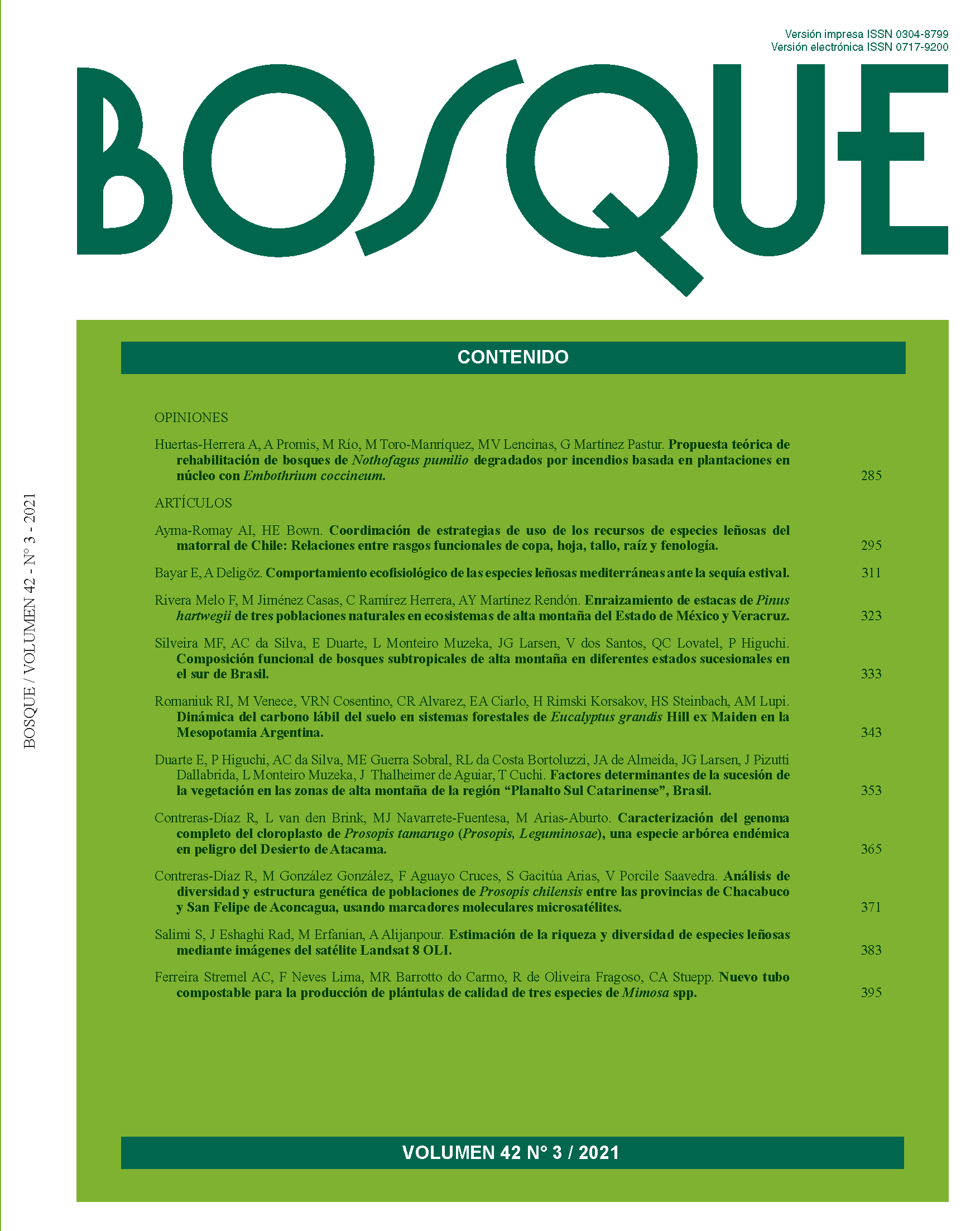Key factors affecting succession in upper montane forest areas of “Planalto Sul Catarinense” Region, Brazil
Main Article Content
Abstract
The understanding of the succession process is a fundamental condition in defining strategies for the conservation and sustainable use of forest ecosystems. Therefore, we aimed at testing which ecological factors affect short-term successional changes in the upper-montane forests of the “Planalto Sul Catarinense” Region, Brazil. We evaluated the influence of propagules source, soil seed bank, edaphic and topographic variables, nucleating elements and natural regeneration floristic-structural composition on demographic rates of tree-shrub regenerating component in three disturbed open vegetation areas at São Joaquim National Park. We inventoried the regenerative component in 2014, 2015 and 2016, within one 20x100 m transect in each area. Afterwards, demographic rates were determined for each period. The influence of explicative variables on demographic rates of the regenerating component was tested through the Generalized Least Square (GLS) model. We found an increment in both individuals and richness over time. When analyzing the influence of the explanatory variables on the speed of the successional process, we observed that only the floristic-structural composition of the natural regeneration was determinant. We conclude that the speed of the represented succession is, to a large extent, a feature related to the phase of the successional trajectory in which the vegetation is found.

